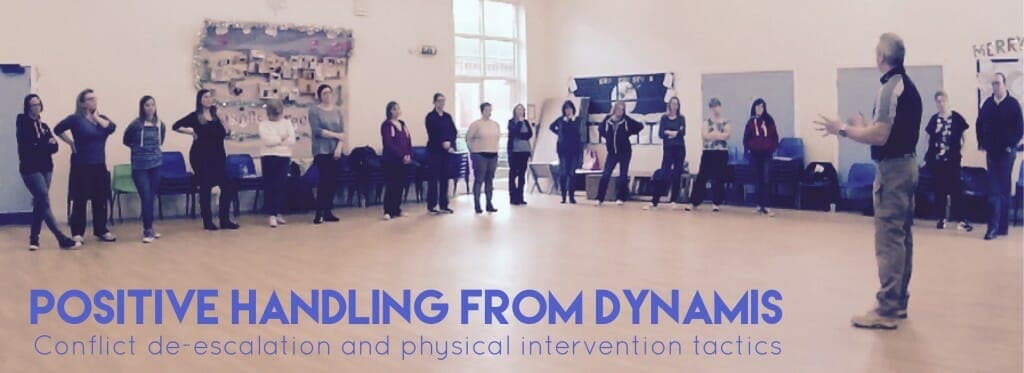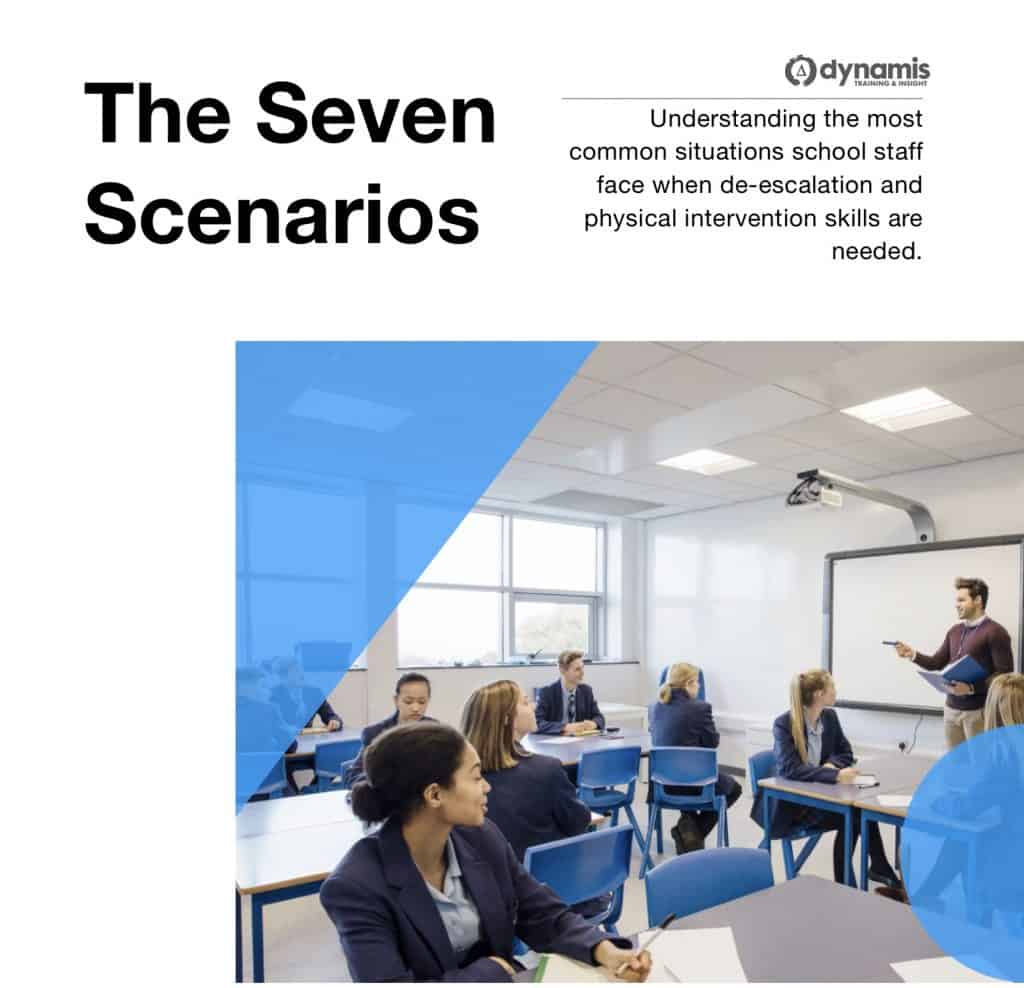Dynamis provides a specific education-focussed one-day (or half-day where necessary) training course in the issues involved in use-of-force in a school setting.
The case of Deputy Head Teacher Royden Cope has been much discussed in the news and we feel that Jenny McCartney put the issues at-hand very clearly in her piece in the Telegraph :
“Imagine that you are a well-respected deputy head teacher who has proudly devoted your career of 41 years to the education of primary school children. Your daughter is a teacher, too, and your little granddaughter is in your class.
There is an unruly seven-year-old boy in your school who is frequently uncontrollable and violent. One day, he goes particularly berserk, and you are called to deal with his behaviour. He is thrashing around hysterically, and you physically restrain his arms to calm him down: in the course of the tussle, your hand makes contact with his face. It is alleged that you have smacked him on the face, or so the boy says when he recounts the incident to his mother some days later.
Soon after, you are summarily marched off the school premises, to be charged with assault. Your prosecution takes five months and costs the taxpayer thousands of pounds. The magistrates clear you of blame, but the damage is done.”
“ALL SCHOOL STAFF HAVE A LEGAL POWER TO USE REASONABLE FORCE”
Department for Education guidance, revised and published in 2012 , states that:
“All school staff members have a legal power to use reasonable force to prevent pupils committing a criminal offence, injuring themselves or others or damaging property, and to maintain good order and discipline.”
The above incident happened on March 9 2012 when the youngster ran amok, hitting ten classmates with his bag, pinning one of them to the wall, and yelling at teachers.
One teacher said the boy was in such a temper his face was bright red, and he grabbed railings to stop himself being taken to Mr Cope’s classroom, repeatedly screaming: ‘Get off me, get off me’, the court heard.
The teacher Mr Cope told Blackburn magistrates:
‘He had worked himself into an incandescent rage, but I thought I would eventually calm him down and just needed to be firm with him. He was next to a cupboard and a desk leg, and I held him by the hands as I was concerned he would bang his head.
‘I was trying to stop his head from rolling around so I put my hand out to stop him. That’s when he slammed into my hand and there was contact.’
All of the circumstances as reported appear to support the use of force in compliance with the guidance to ‘prevent pupils….injuring themselves or others’. And so the magistrates found his actions reasonable in the circumstances!
ROBUST DEFENCE
National guidance clearly states:
“Staff members can sometimes be worried that using force will lead to false allegations of unreasonable or unlawful conduct in the form of a complaint or legal action. But if the force used is reasonable all staff will have a robust defence against any accusations.”
At one point, having been found not-guilty by a magistrate;s court, Mr. Cope spent some time afterwards still suspended pending some kind of inquiry by Lancashire County Council. What is incredible is how this can be the case! If a Magistrate, having the knowledge, experience and judgement expected of an official of the courts, has reviewed all the evidence placed before it by the Crown Prosecution service who brought the case, and subsequently decided that the man had done no wrong?
ALLEGATIONS
Research has found that almost half of the thousands of allegations made against school staff each year turn out to be unfounded. A total of 47 per cent of the claims made by pupils and their families were unsubstantiated or malicious. 12 per cent of more than 2,800 allegations led to a police investigation, with 3 per cent resulting in a conviction or a caution.
In summary:
- 2,827 allegations were made against school staff between April 2009 and March 2010
- 45% were unfounded or unsubstantiated
- 2% were malicious
- 56% related to physical abuse
- 12% led to criminal investigations
- 3% led to convictions or police cautions.
One survey found that 17 per cent of allegations of physical abuse were made after teachers had used authorised restraint on pupils. For this reason there is government guidance about how to deal with allegations made against teachers .
PLAN FOR THESE INCIDENTS
All of this underlines the need for schools to plan for these forseeable events by putting robust and lawful, practical and pragmatic policies and procedures, training and decision-making in place in order to create a safe environment for all of our children and for the dedicated staff who are called to educate them.
Again, national guidance once stated:
“An effective and credible use of force policy is essential to a well-run school. The policy should be communicated to all staff, pupils and parents. Schools should never seek to inhibit the ability of staff to use force by adopting a ‘no contact’ policy. The power to use force helps ensure pupil and school safety and the risk with a no-contact policy is that it might place a member of staff in breach of their duty of care towards a pupil, or prevent them taking an action needed to prevent a pupil causing injury to others.”
Crucially, the government guidance advises that schools have trained staff within the school who can deal with incidents when they arise. Often, it is our feeling, the decision to initiate disciplinary procedures agains a member of staff is taken by persons who are not trained or competent to make decisions about when a use-of-force or restraint intervention is justified or reasonable. All too often the knee-jerk default reaction to an allegation is that the staff member acted in the wrong.
“It is advisable that at least one member of staff in every school has received recent training by expert accredited providers in physical intervention and restraint techniques (in larger schools this might be two or more). However, it should not be assumed that trained members of staff should be solely responsible for dealing with all incidents where physical intervention or restraint is required.”
Dynamis provides specific school-focussed one-day (or half-day) training in the issues involved in use-of-force in a variety of school settings, which reflects government guidance on this area, clarifies the rules involved for teachers, and offers management a position of knowledge from which to make good decisions about managing violent or high-risk incidents and their aftermath.

Gerard O’Dea is a conflict management, personal safety and physical interventions training consultant. He is the training director for Dynamis, a specialist in personal safety and violence reduction initiatives and the European Adviser for ‘Verbal Defense and Influence’, a global programme which addresses the spectrum of human conflict. www.dynamis.training
Gerard’s book on Lone Worker Personal Safety http://www.amazon.co.uk/dp/1494759217



